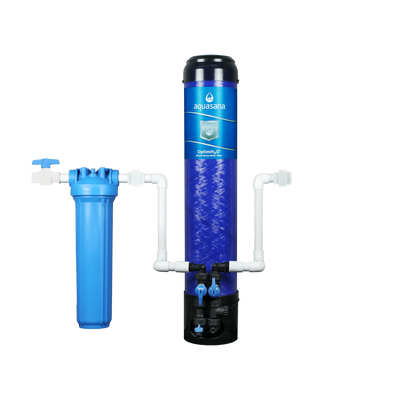On August 19, 1998, an amendment to a federal law went into effect that requires community water systems to send each resident a detailed report showing them what is in their water. It’s the centerpiece amendment to the “Safe Drinking Water Act (SDWA)”, called the Consumer Confidence Report (CCR). According to the Environmental Protection Agency (EPA), “under the SDWA, EPA sets standards for drinking water quality and with its partners, implements various technical and financial programs to ensure drinking water safety.”
About the Safe Drinking Water Act
The SDWA was originally passed in 1974 and has been amended across a period of more than 20 years to benefit consumers across the United States. The goal? To “protect public health by regulating the nation’s public drinking water supply”.
Before this period of time, there was little oversight over the United States water supply. And with more than 170,000 public water systems providing clean drinking water to Americans, this federal law was important to refine and get right for the American public.
The annual report itself — the CCR — is also known as a Water Quality Report. It is required by law to be released to residents annually on every July 1st.
What Information is in Your Consumer Confidence Report
Your CCR benefits the consumer in many other ways, too. For example, it helps each citizen to better understand what’s in their water. It also holds the appropriate federal and state government agencies accountable, giving them the data they need to better mitigate large-scale water issues and health hazards.
More than that, it shows key info, such as:
- Where your water is sourced — is it from a river, aquifer or lake?
- Health effects — what impacts consuming the water might have.
- Contaminants that are regulated & at what levels — when do contaminants become hazardous?
Reading your Water Quality Report

At first blush, it might look complicated to discern the abbreviations, understand your contaminant levels and what they might mean for your water. How much chlorine is too much? How many alpha emitters should my water have anyway?
Let’s break it down. According to the EPA, here’s how the numbers map out:
- “Maximum Contaminant Level Goal (MCLC): If the value in the “Your Water” column is below this MCLG there is no known or expected risk to your health.
- Maximum Residual Disinfection Level Goal (MRDLG): If the value in the “Your Water” column is below the MRDLG there is no known or expected risk to your health.
- Maximum Contaminant Level (MCL): If the value in the “Your Water” column is above the MCL, the system is in violation of EPA’s regulations.
- Treatment Technique (TT): A required process intended to reduce the level of a contaminant in drinking water.
- Maximum Residual Disinfectant Level (MRDL): The highest level of a disinfectant allowed in your drinking water. A certain amount of disinfectant has been shown to help control germs and microbes in the water.
- Your Water: The highest level of that contaminant found in your water during sampling.
- Range detected: The “range” refers to the levels—high and low—at which contaminants were detected in your drinking water.
- Violation: Shows if a contaminant that is present in your drinking water is above the level allowed by EPA.”
The most important thing to remember is that no matter how insistent these reports are that “contaminants in your water do not necessarily pose a health risk,” any level of contamination in our drinking water represents a danger to our health. Of the over 75,000 toxic chemicals used in our society, the EPA has only set standards (MCLs) for about 90, and those 90 Maximum Contaminant Levels are not necessarily set on “health effects.”
Because the average American female is 168 lbs and the average American male is 195 lbs, the EPA considers limited health studies based on the consumption of one certain chemical by a 175 lb. adult when setting standards. No consideration is given to the effects on small children or the combined effects of two or more contaminants, which some studies show are magnified by as much as 1000 times.
the EPA considers limited health studies based on the consumption of one certain chemical by a 175 lb. adult when setting standards.
For those with concerns about the findings in their water quality report, or if you’re just looking to protect your entire home from chlorine/chloramines, lead, PFAS and more from the outset, there are whole house systems designed just for these situations. Aquasana whole house filters reduce 97 percent of chlorine in regular tap water, as well as other harmful contaminants, such as heavy metals, herbicides, pesticides, VOCs, industrial solvents and more. Because while your city does have rules to follow when it comes to treating your water, it sometimes misses some key contaminants. After all, the only one that can truly protect your whole home from contaminants is you.
